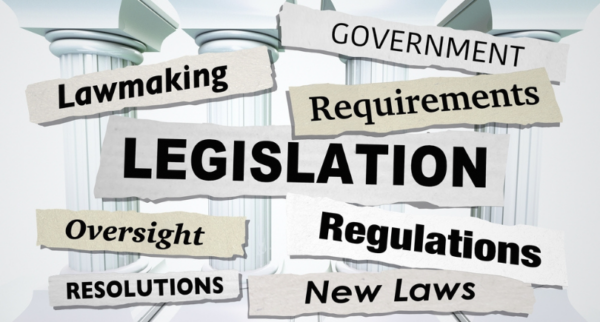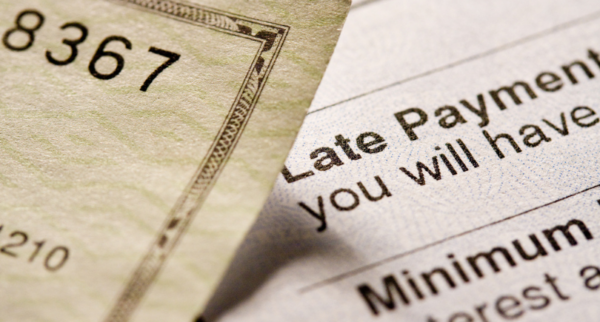My last article outlining some amazing, little-known benefits of credit cards was fun to write since everyone likes perks. However, since CardRatings strives to be objective in its reporting, my editor thought (and I agreed) it would only be fair to do a follow-up article on lesser-known examples of credit card traps or “gotchas.”
Credit cards have been notorious for fine print for a long time, well before I started covering the industry in 1998. Thankfully, the Credit Card Act of 2009 (CARD Act) resulted in significant improvements in fee disclosures and increased clarity in statements. Still, I’ve always maintained that while regulation is important, the best protection for consumers is education.
Key takeaways
- Credit card grace periods typically don’t apply to all types of transactions
- Watch out for deferred interest offers
- Understand the difference between the credit card marketing language and the fine print
- Avoid using a putting new purchases on a card to which you’ve transferred a balance
At a minimum, consumers need to know basic credit card terms as well as common credit card fees. This article, though, focuses on more obscure terms and conditions that can create even more financially devastating situations than large rate hikes or fee increases. Case in point, according to the J.D. Power 2021 U.S. Credit Card Satisfaction Study released last summer, misaligned card terms and rewards contribute to creating a recipe for declining customer satisfaction with credit card issuers.
Cash advances show no grace
Grace periods typically allow you to make a purchase and pay no interest on it as long as you pay it off in full during the grace period and before the billing cycle due date.
However, some situations don’t qualify for a grace period. One example is using your credit card for cash back; it’s called a cash advance and could include getting cash at an ATM, via a bank teller or writing a check. Note that a bank might consider credit card checks, sometimes called convenience checks, as cash advances or balance transfers.
Cash advances have been a pet peeve of mine for many years because of the high interest rate, normally significantly higher than the purchase APR, typically associated with them. Just as an example, one credit card terms document I checked notes the card charges a 15.49%-25.49% for purchases, but up to 30.49% for certain types of cash advances.
Another reason I don’t like cash advances is because, unlike purchases, they don’t offer a grace period even if you pay off your balance in full when you get your bill. In other words, the interest starts accruing immediately at that higher APR, not to mention that you pay a cash advance fee typically in the 3%-5% range. Many consumers overlook these potential landmines.
The bottom line: Avoid cash advances like the plague. They pose a triple threat to consumers in the form of sky-high rates, fees and a “graceless grace period.”
BONUS TIP!
Peer to peer loans can offer a great alternative to a cash advance since they cut banks out of the picture and typically offer lower rates than banks.
The cost of a 0% transfer may outweigh the savings
I have touted balance transfers for years as effective self-help tools for lowering credit card debt. I remain a fan, though even the best balance transfer credit cards charge transfer fees these days.
Despite balance transfer fees of usually around 3%-5%, you can still save hundreds and possibly even thousands of dollars in interest charges with a balance transfer depending on how much you transfer, the interest rate of your current balance versus the interest rate of the transfer offer, etc.
On the flip side, if you don’t play the balance transfer game wisely, it can cost you more than any potential savings. For starters, balance transfers, like cash advances, don’t enjoy a grace period.
You may believe this won’t affect you as long as you take advantage of a 0% transfer offer since these offers don’t charge any interest during the promotional period, which typically lasts six to 21 months. However, unless the 0% transfer offer also includes a 0% rate on purchases as well, your misunderstanding could end up costing you.
“One potential ‘gotcha’ that many people aren’t aware of when they do a balance transfer is that after the balance transfer is done, any new purchases don’t have a grace period,” says Lynnette Khalfani-Cox, personal finance expert and author of Zero Debt: The Ultimate Guide to Financial Freedom. “So even though you may have gotten a 0% balance transfer offer, each new time you use the new card to buy stuff, interest is accruing on those purchases from day one. So additional transactions after the balance transfer will likely have double digit interest rates, even though your initial balance transfer was a 0% deal!”
I dug through some fine print on a Citibank offer and found the following related wording under the “Things You Should Know About Your Balance Transfer Offer” section:
If you transfer a balance with this offer, interest will be charged on purchases made with your credit card unless your purchases have a 0% APR or you pay the New Balance shown on your statement (including the amount of your balance transfer) in full by the payment due date each billing period.
The key takeaway here is NEVER make new purchases on a credit card you’ve used for a 0% transfer offer unless that card also has a 0% promo rate on purchases as well.
BONUS TIP!
Even if the transfer offer you are considering has a 0% intro rate on purchases, be sure to verify how long that rate remains in effect. It may be for a much shorter period than the 0% transfer rate.
For example, CardNamediscontinued features an impressive intro 0% rate on balance transfers for 18 months, but the intro 0% period for purchases remains in effect only for six months. Transfers and purchases jump to a RegAPR after their respective intro periods end.
0% offers on store cards – Hidden time bombs?
Many store credit cards, such as the Home Depot and Best Buy cards, offer 0% or low rate financing for a limited time on new purchases. Enticing, especially if you’re buying a big ticket item like a new appliance or giant-screen TV.
With discipline, you can indeed pay no interest or fees and can spread your payments out over the promotional period, which can prove a nice way to even out your cash flow. This period usually lasts from six to 12 months, but may extend as long as 24-plus months.
However, if you read the terms of these offers carefully you’ll notice they usually impose (a nice way of saying “slam you with”) deferred interest if you don’t pay your balance in FULL by the end of the 0% promotional period.
“When a retailer offers deferred interest, it means you’re getting a payment plan that lets you pay no interest IF and ONLY IF you pay off the entire balance by the end of a promotional term,” Khalfani-Cox explains. “The problem for consumers is that most people have the best of intentions but then they don’t pay off these balances [and] they wind up getting socked with a bunch of interest that has accrued over the entire promotional period – even on amounts that have been paid off. This is sometimes called retroactive interest.”
It often comes as a nasty surprise when the promotional period ends and you get a statement showing the interest as a lump sum, kind of like a balloon payment. On top of that, these deferred interest plans get complex because if you don’t pay that lump sum of interest right away, you can accrue even more interest – effectively paying interest on top of interest!
For all these reasons, and more, the National Consumer Law Center (NCLC) has called deferred credit card promotions everything from “unfair” to a “hidden time bomb” to a “deceptive” practice.
I noticed recnetly that the related fine print for these offers does seem to be more visible than I remember it being years ago (likley thanks, in part to the Consumer Financial Protection Bureau,). At the top of the Best Buy card application webpage, for example, you’ll find following disclaimer in very readable font (i.e. not super small):
No interest if paid in full within 24 months*
*On hearing aid purchases $699 and up when you use your My Best Buy® Credit Card. Interest will be charged to your account from the purchase date if the purchase balance is not paid in full within 24 months. Offer ends 1/26/23.
If you see similar wording in an offer you find, know that you likely spotted a deferred interest offer. If you decide to move forward with the application, ensure all your monthly payments make it into to your budget and that you pay off every dollar BEFORE the promo period ends. I would suggest carefully tracking payments with a calendar or personal finance software.
BONUS TIP!
Do the math when considering these offers – our credit card interest calculator may help.
The NCLC gives a great example of how costly they can be:
If a consumer buys a $2,500 living room set on January 2, 2016 using a one-year 24% deferred interest plan, then pays off all but $100 by January 2, 2017, the lender will retroactively charge nearly $400 interest on the entire $2,500 dating back one year!
The NCLC gives a great example of how costly they can be:
If a consumer buys a $2,500 living room set on January 2, 2016 using a one-year 24% deferred interest plan, then pays off all but $100 by January 2, 2017, the lender will retroactively charge nearly $400 interest on the entire $2,500 dating back one year!
The hook vs. the fine print
In summary, I hope these examples have been helpful in terms of making you more aware of the fine print associated with not just these offers, but with every credit card offer. While reviewing the fine print isn’t fun, it isn’t rocket science either and it does get easier as you grow more familiar with the legalese used in the card industry.
Taking a few minutes to review the terms of an offer could save you hundreds and possibly even thousands of dollars, so the time investment to read the fine print is worth it.
“When it comes to credit card offers – and to credit transactions in general – always remember that there are two parts to a credit offer: The hook and the fine print,” she points out. “The ‘hook’ is what draws you in. It’s when you see bold-faced words like ‘special,”promotional,’ and ‘exclusive’ or marketing language like ‘free,’ ‘low APR’ and ‘cash back bonus.’ Basically, the hook is what entices you to consider saying ‘Yes’ to a credit offer.
“The fine print, on the other hand, is less appealing, but it’s what actually rules the day. So don’t get so wowed by the hook that you fail to read – or even acknowledge – the more important fine print. The fine print may be tiny, on page 13 of an agreement, or only apparent after you look for something labeled with an asterisk… but it’s there! You’ll recognize the fine print by phrases like: ‘Terms and conditions,’ ‘certain restrictions apply,’ and ‘consult disclosures for important information.'”
Khalfani-Cox adds that the fine print reveals what you must do to qualify for something. It is where you find out when the benefits promised apply, when they don’t and when they can change, expire or be revoked.
So, a word to the wise: NEVER ignore the fine print!
I sincerely hope these insider tips are helpful to you and would love your feedback any “fine print” pitfalls you have encountered and/or hopefully avoided. Who knows, I may include a tip from you in a future article!


